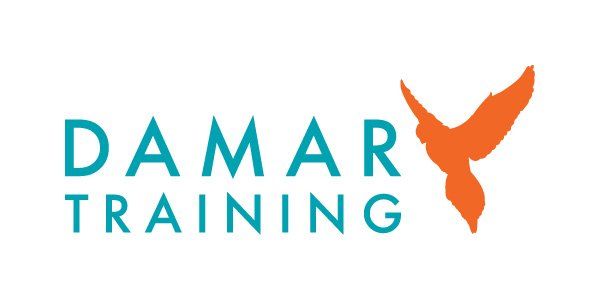Legal apprenticeships - time for reform
Towards a more diverse, inclusive, healthy and successful legal sector

About the author of this guest blog: Jonathan Bourne is a former solicitor and managing director of national apprenticeship provider Damar Training. He worked with partners to develop the very first legal apprenticeship and his team at Damar work with hundreds of law firms delivering several different legal apprenticeships. Damar recently announced an innovative partnership with the O Shaped community to embed O Shaped content within the paralegal apprenticeship.
Five years on from the introduction of the Apprenticeship Levy (the 0.5% payroll tax on larger organisations) numbers of legal apprentices are growing with an estimated 2,000 nationally across perhaps.400 employers. Recent growth has been driven by the solicitor apprenticeship, where long-form (5 to 6-year) apprenticeships are being followed by non-graduates (often A level leavers) and shorter form versions are being followed by graduates.
We are also now seven years into the reformed apprenticeship “standards” era where legal apprenticeships were some of the earliest to be approved. Although solicitor apprenticeships are the most talked about, there are five other legal apprenticeships: for paralegals, Chartered Legal Executives, conveyancing technicians, probate technicians and Licensed Conveyancers.
The appeal is obvious: a heavily subsidised way to attract, develop and retain talented people from diverse backgrounds, as well as a tool for developing the skills of existing colleagues. The fact that many larger employers have large unspent Levy pots and that, in some cases, Levy funds can be used in lieu of “real money” training budgets makes them more attractive still.
However, and despite many individual successes, legal apprenticeships are nowhere near to delivering on their potential they have to help the sector become more diverse, inclusive, healthy and successful. For a £40b sector that supports around 12,000 employers and 550,000 jobs, a couple of thousand apprentices barely scratches the surface. On 18th July a consultation was launched by the Institute for Apprenticeships and Technical Education (IfATE) to find out what can be done to improve things. It remains open until 30th September. For reasons set out below the consultation is far from perfect. However, it is the best opportunity the sector will have, perhaps for many years, to influence the design of vocational legal education so that it better meets current and future needs.
So, whatever you do after reading this piece, please respond to the consultation and share it with anyone who has an interest, be they firms, in-house teams, lawyers, law students, apprentices, clients or legal educators.
So, what’s the matter with legal apprenticeships? Well, in one sense, and apart from the fact that some are now a bit out of date, nothing. They cover the main regulated legal professions (apart from the Bar) and several more junior legal roles. But this is also the problem. By replicating the status quo in apprenticeship form, they also allow (but now with the help of public money) many of the problems of the current system to endure. These include obstacles to:
· people climbing up the professional “ladder” (e.g., from paralegal to qualified lawyer or Chartered Legal Executive to solicitor).
· people moving between different specialisms.
· the recognition of individual achievement.
· smaller firms offering solicitor apprenticeships and so access the same pool of talent as larger competitors.
· larger firms offering places to those from “non-traditional” backgrounds.
· innovation by employers and providers.
· competition and market access.
· access for those with disabilities or caring responsibilities.
Real stories illustrate some of these points. The first is about a former apprentice of ours at Damar, Jordan Coulton, who features in a short video taken from this year’s annual report by the Social Mobility Commission: https://www.youtube.com/watch?v=CToj2uOWQto (from 3.21 to 4.01)
Jordan is now a Chartered Legal Executive at Weightmans (an early and longstanding supporter of legal apprenticeships). He began with the old higher apprenticeship in legal services, then had to do “top up” units outside an apprenticeship before progressing to the Chartered Legal Executive apprenticeship. What the video can’t show in just 40 seconds is the complexity of that route Jordan took and the hoops he, his firm and Damar had to jump through.
Jordan’s duties at work, like most Chartered Legal Executives, are much the same as for a solicitor. But, if he were to become a solicitor, he would not get any exemptions against the SQE. Indeed, he would have to redo much of the syllabus because the way in which the same level of competency is tested by the two professions is completely different.
The second is about Leila Holmes-Denton, a Licensed Conveyancer at Essex-based law firm Foskett, Marr, Gadsby & Head. She got there by doing a level 4 conveyancing technician apprenticeship and then a level 6 licensed conveyancer apprenticeship, both with Damar. She now wants to be able to work in more areas of law by becoming a Chartered Legal Executive. Simple you might have thought; it’s really just a case of broadening her competence so that it meets the requirements. Not so, the structure of the current apprenticeship standard makes it impossible.
The final story is about a non-graduate apprentice who gets a place on a solicitor apprenticeship programme. Four years into the six-year programme they have been promoted into a senior paralegal role. But they have decided that being a solicitor isn’t for them. Our apprentice wants to stay in their job, earning a good salary, but now needs to leave the apprenticeship. What qualifications have they gained after four years of work, study and perhaps £16,000 of government/Levy funding? Nothing at all.
Now let’s think briefly about an employer considering offering solicitor apprenticeships. It sounds wonderful. No student fees, Levy funded or just £1,350 for a smaller employer. They take five to six years.
How many 18–20-year-olds really know what career they are suited to or what they want to be doing in six years’ time? But for employers it’s harder still. Is it really possible to assess whether an 18–20-year-old is going to be cut out for a job as an assistant solicitor in 2028? And how can smaller firms even know if they will need a newly qualified solicitor that far ahead? As a result, many smaller employers and in-house teams are effectively excluded. Meanwhile, larger firms are placed under unfair pressure to feel they should take the most academically successful: i.e., those who probably could have succeeded the “old” way.
Many of these problems have existed for years and the apprenticeship versions of them are perhaps just the latest iterations. Fortunately, potential solutions have also been around for some time. They lie in two things: the 2013 Legal Education and Training Review and the Solicitors QSQE). One recommendation from the LETR (slightly paraphrased) was the creation of: “A national framework for the sector which would simplify decisions about transfer between professions and qualification routes, support progression from paralegal to professional lawyer and facilitate the development of specialist pathways in niche or emerging areas.”
Needless to say, this has not been implemented. But, in the SQE and in the way apprenticeships themselves work, there are the seeds of a model that could deliver this outcome.
Apprenticeships are all about competence. To be successful, an apprentice must consistently demonstrate and put into practice the knowledge, skills and behaviours required for their job. It is competence to do the work that really matters, not the job title.
And, when we look at what lawyers with different job titles actually do, Chartered Legal Executives often do exactly the same work as solicitors and, in conveyancing, Licensed Conveyancers usually do the same work as the other two professions (notwithstanding some differences around reserved activities under the Legal Services Act). The titles may be different but the jobs and the duties are often indistinguishable. The professional bodies already tacitly acknowledge this: an SQE graduate could, if they wished, easily become a Chartered Legal Executive or a Licensed Conveyancer (although they generally don’t, because of the salary differential). There is no reason therefore why the SQE could not be deconstructed and modules used to form the final end-point test for both Chartered Legal Executives and Licensed Conveyancers. Students would not need to complete the full SQE, just the parts that are relevant for their more specialised roles. Thereafter, an apprentice such as Jordan or Leila could progress to become a solicitor by studying for and taking the remaining parts of the SQE. Such an approach would also make it easier for older applicants with caring responsibilities or with a disability to progress at a pace suitable for them and their employer.
Similar points apply to more junior legal roles. There is no reason to have a standalone apprenticeship for a probate or a conveyancing technician, each with its own assessment method. Both are specialist paralegal roles. An advanced paralegal apprenticeship with different specialist pathways would open access for paralegals in family, crime or corporate (all areas that do not currently have an apprenticeship). And, with modularised end-point assessment then, as with SQE, a paralegal could easily cross-qualify in another practice area either outside or potentially within an apprenticeship.
An advanced paralegal level also reduces the size of the gap between the paralegal and solicitor/CILEX apprenticeships and gives our 4-year qualified solicitor apprentice above a stepping off point and recognition of their achievement. By having sensibly-spaced rungs in the ladder, a smaller firm can plan and recruit for two or three years ahead and a larger firm may be more willing to recruit a candidate who shows potential but has weaker exam results.
Modularisation also helps innovation. It isn’t currently possible to include content in, say, AI, blockchain or legal technology within an existing legal apprenticeship standard. But there is no reason why a module, particularly at advanced paralegal level for one of these areas, could not be developed. Some innovation is possible at the margins – at Damar we are doing this in our work with the O Shaped community. However, the scope is limited.
Focusing on competence first gives employers and apprentices the freedom to decide which professional body (if any) to join. Paralegal apprentices may wish to join CILEX, the National Association of Licensed Paralegals, or the Institute of Paralegals (or none).
Some of these ideas challenge the status quo. Some may not be the right solutions. However, it is undeniable that, nearly a decade on from the LETR and despite the best efforts of many committed employers and educators, there are still barriers to access for those from non-traditional backgrounds. Just 7% of people go to private schools. For qualified lawyers it’s 22%. Many law graduates spend £60,000 or more on their education only to find they cannot get a job. Access is harder for those from minority ethic and socially disadvantaged backgrounds, those with disabilities and older entrants. That’s not just morally wrong, it’s also bad for business and for the economy. It means that breadth and depth of talent coming into the sector is too narrow and too shallow. It reduces productivity and competitiveness and pushes up some salaries and workloads – often to unsustainable levels.
The consultation underway is not ideal. It is very short and also covers finance and accountancy, which sit in the same occupational “route” as Law.
A series of webinars is planned (for legal, the remaining one is on 27th September). There is also an online questionnaire which asks (for legal):
- The apprenticeships approved by IfATE cover the full range of legal occupations [Yes/No answer]
- What legal occupations are not covered? [Free text answer]
- The Legal apprenticeships we use cover all the knowledge, skills and behaviours we expect from a competent employee. [Yes/No answer]
- Apprenticeships are respected as a route for entry to the legal profession. [Yes/No answer]
- Finding the most appropriate apprenticeship to train staff is simple. [Yes/No answer]
- All apprenticeships we are aware of are aligned to the legal regulators' requirements for entry and practice (where relevant). [Yes/No answer]
- Please list those which are not aligned. [Free text answers]
In addition, there is an email address (LegalFinanceAccounting.IFATE@education.gov.uk) for those wishing to “share views or lodge enquiries”.
There is a risk that the short duration, wide breadth and limited depth of the consultation may not result in substantial progress. The questions asked are, either, too general or too technical, and most probably can’t be answered by the many thousands of employers who don’t already have apprentices, or by clients, apprentices or others who have an interest.
Nonetheless, the fact that a consultation is underway is an opportunity. There is an introductory note (which includes a link to the consultation) on Damar’s website here: https://damartraining.com/news/2022/a-more-diverse-inclusive-healthy-and-successful-legal-sector/. This includes a draft consultation response that may be useful. The response asks, amongst other things, for more time.
Do take a few minutes to look at the review and respond in whichever manner you see fit. Many such consultations get very little feedback and so if even a small percentage of the 12,000 employers and 550,000 employees in the sector engage, the IfATE will listen. After all, apprenticeships are funded by employers and taxpayers and so power sits with the sector: with law firms and in-house teams, with buyers of legal services, with individual lawyers, law students and legal apprentices.
Better vocational pathways into the Law are not a panacea but are certainly one of the ingredients that will help create a legal sector that is more diverse, inclusive, healthy and successful. The fact that even the imperfect routes currently available can make such a difference is evidence of this.
You can contact the author at Jonathan.bourne@damartraining.com, or on 07768 056712.










